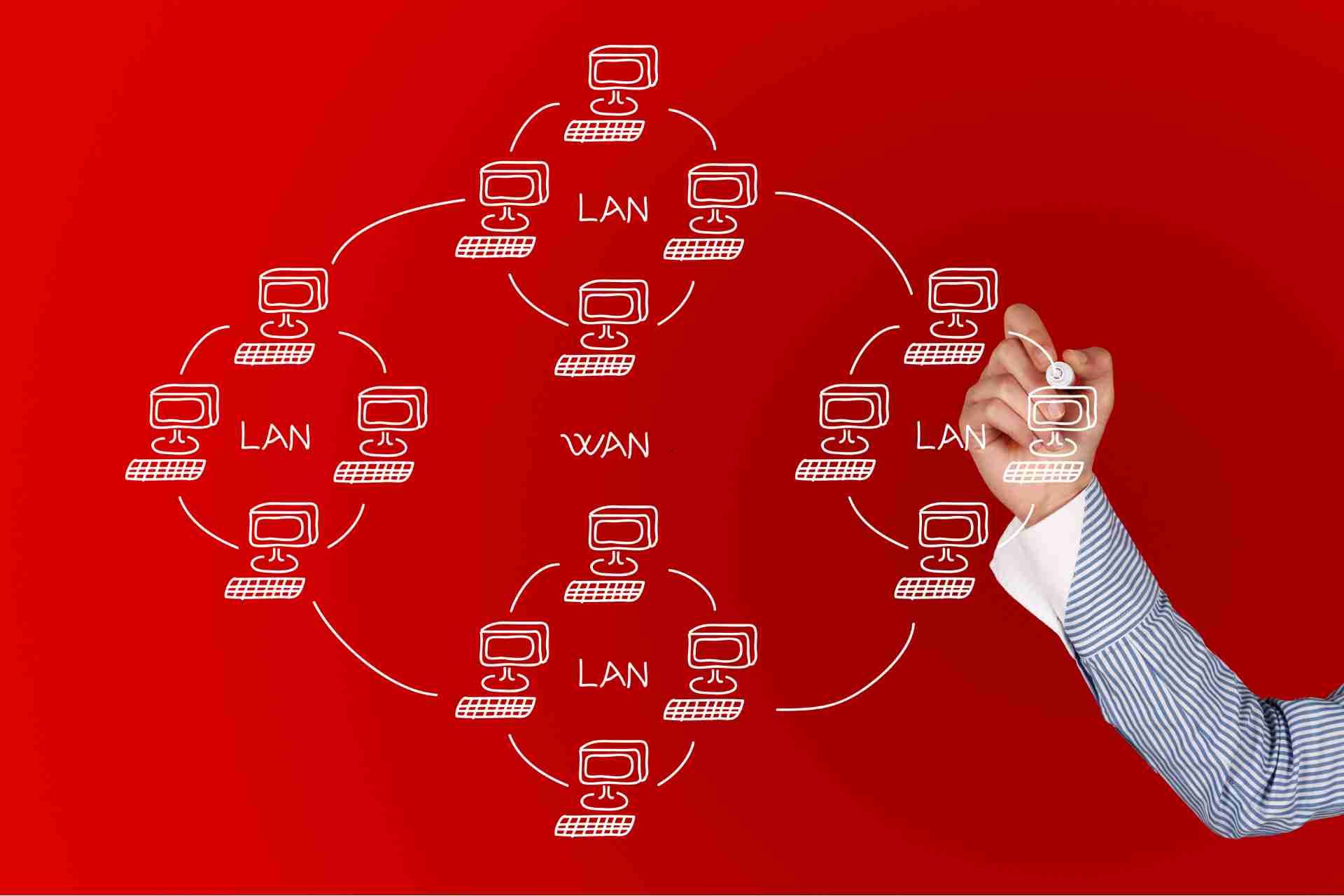Common Network Security Vulnerabilities

Network security is the practice of implementing measures to protect a computer network from unauthorized access, misuse, or disruption. It involves various technologies, processes, and policies designed to prevent data breaches, cyber-attacks, and other security threats.
Some common network security measures include firewalls, antivirus software, intrusion detection systems, encryption, and
virtual private networks (VPNs). Network security also involves implementing strong access controls, regularly updating software, monitoring network traffic, and conducting security audits and assessments.
Effective network security is essential for businesses and organizations to protect their sensitive data, maintain their systems' integrity, and ensure their operations' continuity. It helps prevent financial losses, reputational damage, and legal consequences that can result from security breaches.
In today's digital age, networks are constantly under attack from hackers and cybercriminals who are constantly looking for vulnerabilities to exploit. Understanding and being aware of common network security vulnerabilities is essential in order to safeguard your network and prevent unauthorized access effectively. In this blog post, we will explore some of the most common network security vulnerabilities that every organization should be aware of.
What Is A Network Vulnerability?
A network vulnerability is a weakness in a network's security measures that could be exploited by attackers to gain unauthorized access to the network or its resources. Vulnerabilities can exist in hardware, software, configurations, or user behavior, and can pose a significant risk to the confidentiality, integrity, and availability of the network and the data it contains. It is important for organizations to regularly identify and address vulnerabilities to protect their networks from potential cyber threats.
What are the Common Network Security Vulnerabilities
Weak passwords
Weak passwords are considered a significant network security vulnerability because they are easy for attackers to guess or crack using automated tools. This leaves systems and accounts vulnerable to unauthorized access, data breaches, and other malicious activities. Weak passwords often consist of easily guessable information, such as common words, phrases, or sequences of numbers, and fail to meet basic security requirements, such as length, complexity, and uniqueness.
Attackers can exploit weak passwords through various techniques, including brute force attacks, dictionary attacks, and password spraying. Once they gain access to a system or account, attackers can steal sensitive data, install malware, disrupt services, and cause other forms of damage. In addition, weak passwords can also lead to other security issues, such as password reuse and credential stuffing, where attackers use stolen credentials to access multiple accounts.
To mitigate the risk of weak passwords as a network security vulnerability, organizations should enforce password policies that require strong and complex passwords, regularly educate users on password best practices, implement multi-factor authentication, and periodically audit and update passwords.
Lack of encryption
Encryption is a crucial aspect of network security as it helps protect data from being intercepted and read by unauthorized parties. Without encryption, sensitive information transmitted over a network is vulnerable to being intercepted and exploited by hackers or malicious actors.
When information is sent over a network without encryption, it is transmitted in plain text, making it easy for attackers to intercept and read the data. This can lead to a variety of security breaches, such as unauthorized access to confidential data, theft of sensitive information, and even identity theft.
In addition, lack of encryption can also make the network vulnerable to man-in-the-middle attacks, where a hacker intercepts communication between two parties and alters the data being sent. This can lead to data manipulation, unauthorized access to systems, and other types of malicious activities.
To ensure the security of a network and protect sensitive information, it is important to implement strong encryption protocols to encrypt data in transit and at rest. This helps to create a secure communication channel and prevent unauthorized access to sensitive information.
Unpatched software
Unpatched software is a serious network security vulnerability that can be exploited by cyber attackers to gain unauthorized access to a system or network. When software patches are released by vendors, they typically contain security updates that address known vulnerabilities and close off potential entry points for hackers.
If software is not regularly updated with the latest patches, it leaves the system vulnerable to attack. Cyber attackers can exploit these vulnerabilities to launch various types of attacks, such as malware infections, ransomware attacks, and data breaches.
To mitigate the risk posed by unpatched software, organizations should establish a robust patch management process to ensure that all software is regularly updated with the latest patches. This includes implementing automated patch management tools, regularly monitoring for new patches, and applying patches in a timely manner to reduce the exposure to potential security threats.
Misconfigured security settings
Misconfigured security settings can pose a serious network security vulnerability as they can leave systems and data exposed to potential attacks. This can include things like weak passwords, default configurations that are easily exploitable, lack of encryption, improper access controls, and inadequate patch management.
Hackers can take advantage of misconfigurations to gain unauthorized access to networks, steal sensitive information, disrupt services, and even use the compromised systems as launch points for further attacks.
To mitigate this vulnerability, organizations should regularly review and update their security settings, conduct security audits, implement strong authentication measures, enforce access controls, and provide ongoing training for employees to ensure they are aware of security best practices.
Phishing attacks
Phishing attacks are a significant network security vulnerability that can result in serious consequences for individuals and organizations. Phishing attacks typically involve cybercriminals posing as legitimate entities, such as financial institutions or popular websites, in order to trick individuals into providing sensitive information, such as login credentials or financial details.
These attacks can be carried out through various means, including email, text messages, or social media messages, and are often designed to appear as legitimate as possible in order to deceive the recipient.
Once an individual falls victim to a phishing attack and provides their sensitive information, the cybercriminals can use this information to steal money, access confidential data, or conduct other malicious activities.
To protect against phishing attacks, individuals and organizations should be vigilant and cautious when interacting with unsolicited messages or requests for information.
Lack of regular security audits
Regular security audits are essential for identifying any vulnerabilities or weaknesses in a network's security measures. Without regular audits, potential security breaches may go undetected, leaving the network exposed to attacks or unauthorized access.
Some of the potential risks associated with not conducting regular security audits include:
- Failure to identify and patch software vulnerabilities: Regular security audits help to identify any outdated software or systems that may be vulnerable to cyberattacks. Without these audits, organizations may not be aware of critical security updates that need to be implemented.
- Inadequate security controls: Without regular audits, organizations may not be aware of gaps in their security controls or policies that could leave the network vulnerable to breaches. This could include weak passwords, inadequate access controls, or lack of encryption protocols.
- Lack of policy enforcement: Security audits help ensure that security policies are being followed and enforced across the organization. Without regular audits, employees may not be aware of the importance of following security protocols, increasing the risk of human error leading to security breaches.
Insider threats
Insider threats pose a significant network security vulnerability as they come from people within an organization who have privileged access to confidential information and IT systems. These insiders can intentionally or unintentionally cause harm to the organization by stealing sensitive data, disrupting network operations, or carrying out malicious activities.
Insider threats are more difficult to detect compared to external threats, as insiders already have legitimate access to the organization's network systems and are familiar with security protocols. This makes it easier for them to bypass security measures and carry out their malicious intent without raising suspicion.
Organizations can mitigate insider threats by implementing strict access controls, monitoring employee activities, conducting regular security training and awareness programs, and implementing strong encryption and authentication mechanisms.
Lack of network segmentation
Network segmentation is the practice of dividing a computer network into smaller subnetworks or segments to improve security by reducing the potential attack surface. Without proper network segmentation, all devices on the network are in the same segment and can communicate with each other easily, increasing the risk of lateral movement for attackers.
This lack of segmentation can lead to several security vulnerabilities, including:
- Unauthorized access: Without segmentation, an attacker who gains access to one device on the network can potentially gain access to all devices, leading to a widespread compromise.
- Data exfiltration: Attackers can easily move laterally across the network to access sensitive data, stealing valuable information without detection.
- Malware propagation: Malware can quickly spread throughout the network if there are no segmentation barriers in place, impacting multiple devices and causing widespread damage.
- Regulatory compliance issues: Many industry regulations and standards (such as PCI DSS, HIPAA, and GDPR) require organizations to implement network segmentation to protect sensitive data. Failing to do so can result in non-compliance and potential financial penalties.
To mitigate these risks, organizations should implement network segmentation to separate critical assets from less secure areas of the network
Outdated hardware
Outdated hardware can pose a significant security risk for a network. Old hardware may not have the latest security features, leaving it vulnerable to cyber attacks. In addition, manufacturers may stop providing security updates and patches for outdated hardware, making it easier for hackers to exploit vulnerabilities and gain unauthorized access to the network.
Furthermore, outdated hardware may not be able to support modern security protocols and encryption methods, leaving sensitive data at risk of being intercepted or compromised. This can lead to data breaches, financial losses, and damage to the organization's reputation.
To mitigate this risk, organizations should regularly assess their hardware inventory and replace outdated devices with more secure ones. They should also ensure that all hardware devices are kept up-to-date with the latest security patches and firmware updates to protect against potential threats
Social engineering attacks
Social engineering attacks are a significant network security vulnerability, as they exploit human psychology rather than technological weaknesses to gain unauthorized access to systems. These attacks typically involve manipulating individuals into divulging confidential information or performing actions that compromise the security of a network.
Some common social engineering tactics include phishing emails, pretexting (creating a false scenario to gain access), baiting (leaving malware-infected devices in public places to be picked up), and tailgating (following an authorized individual into a secure area).
These attacks are dangerous because they can be difficult to detect and can potentially bypass traditional security measures. As such, organizations must implement employee training programs to raise awareness about the dangers of social engineering and encourage best practices for recognizing and responding to suspicious requests
Partner with Professionals to Secure your Network
As technology continues to advance, businesses must stay vigilant to protect their networks from cybersecurity threats. Partnering with RGV Geeks can provide you with expert guidance and support to strengthen your network security measures. Our team of experienced professionals can conduct thorough assessments, implement advanced security solutions, and provide ongoing monitoring and maintenance to ensure your network remains secure. By partnering with RGV Geeks, you can have peace of mind knowing that your critical data and systems are protected from cyber attacks.
Contact us today to discuss how we can improve your network security.












